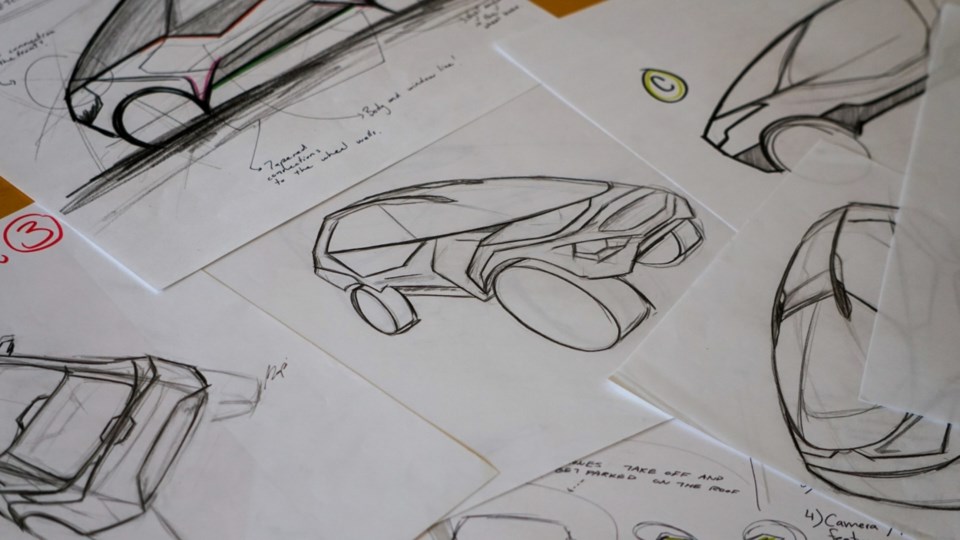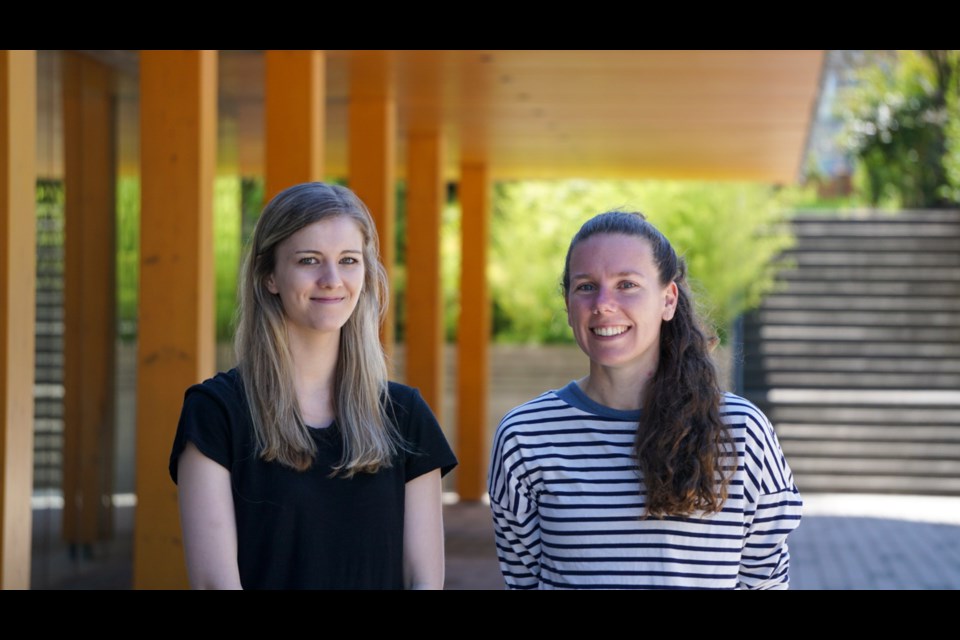Two university students in Richmond are vying for first place in a competition to design the first all-Canadian zero-emission concept car.
Marie-Pier Alary and Bailee van Rikxoort, product design students in Kwantlen Polytechnic University’s (KPU) Wilson School of Design, are one of three teams to reach the second phase of Project Arrow, a competition launched by the Automotive Parts Manufacturers’ Association of Canada (APMA) for post-secondary students and the automotive supply sector.
The competition was launched to “answer the Prime Minister’s call for a zero-emissions future by 2050,” according to the Project Arrow website. The project will roll out over four phases, with the release of the concept car set for 2022.
The project is an “all-Canadian effort,” the website notes, and the concept car will be “designed, engineered and built by (Canada’s) world-class automotive supply sector and post-secondary institutions.”
Alary and van Rikxoort make up the only all-female team in the competition, and weren’t experienced in car design when they joined.

“We definitely anticipated challenges,” said van Rikxoort.
“For instance, learning specialized 3D programs, however, we quickly realized that car design is more familiar to us than we thought.
“A lot of what we learned in our prior years studying product design became very relevant in helping us design the car, such as elements of human factors, sustainability and production methods.”
The students wanted to design an accessible car for Canadians across the country, according to the release.
Through the competition, they also had to predict the needs of drivers and passengers in 2025, when more autonomous cars are expected to be on the road.
“We focused our concept on modularity. We believe that modularity is the new luxury,” said Alary.
“Canadians have multiple interests and one car should be able to accommodate most of what they can do.”
The design selected by the competition’s jury will form the foundation for the development of a virtual, or augmented reality, concept vehicle, according to a press release issued by KPU, and then a full-size concept vehicle.
However, it’s possible the jury could select more than one design – depending on whether they prefer the interior and exterior car designs from the same team.
The design must include all aspects of the car.
The team was able to dive into “a vast array of design disciples that go into producing a car,” said van Rikxoort, such as learning what it takes to design an aerodynamic vehicle and figuring out how to design a modular “yet aesthetically pleasing interior.”
“It has undoubtedly been a valuable opportunity to discover the areas of design we’re more passionate about,” she said.
Alary said that phase one of the competition was “intense,” as the team had lots to think about, however, they were also able to learn “a lot about our own capabilities as we had to make the design entirely online because of the pandemic.”
In the second phase, the students worked with specialists from Autodesk, a design software company.
“Just this perk was worth every effort we did in phase one,” said Alary.
The team is also being supported by KPU design instructor Dr. Victor Martinez, who has a background as a car designer.
While the competition is for a concept car for the future, it will have to be manufactured with real materials, said Martinez.
“It’s not just a beautiful design. It has to have all the services and functions that you can do with the vehicle,” he said.
Alary said she and van Rikxoort couldn’t have come as far as they have in the competition without the help of Martinez.
“I don’t think that we would have been able to accomplish as much as we did without the help Victor Martinez,” said Alary.
“His ability to share with us his knowledge and experience of working in the automotive industry was invaluable when trying to understand the basics of car design, and trying to be car designers ourselves.”
The team will deliver the next portion of their project at the end of August.



